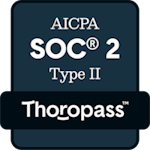Teaching online requires an intentional, thoughtful approach to instructional design, because, for one, learners are being asked to make an abrupt transition to a different training environment. In addition, the move to online learning affects those struggling the most. Jered Borup is an associate professor in learning technologies at George Mason University, and he notes that it all boils down to the support the students have when learning virtually. If the facilitator or mentor assists with the technology and helps focus their attention, they can perform well in virtual classes—sometimes even better.
The challenge comes with cultivating a learning environment that promotes collaboration and encourages engagement – however, this is tough, but definitely not impossible. There are tools in place that can help educators make their virtual classrooms a place students would love to be in. Augmented Reality (AR) has proven to be a tool that ensures engagement and retention.
Set up an immersive experience
The use of tools that allow for an immersive experience keeps students and employees engaged. For instance, you can take advantage of Augmented reality (AR) to engage the students’ senses and enhance their method of learning as the tech immerses them in a virtual world like no other. Unlike typical lectures, AR-powered learning offers the students an enriching experience they’ll never forget.
The good news is platforms like BUNDLAR make it a breeze to create, edit, and access augmented reality experiences. Even without prior coding experience, users can build AR environments, as well as scale, track, and provide experiential training and learning solutions that are custom-built for the class. This approach definitely changes the dynamic of virtual learning, and there’s a great chance students will participate and engage more in lectures.
High-tech and high-touch
The reason why students struggle learning online is that it’s hard to replicate the in-person classroom experience. But the proven workaround is what people call ‘High-touch,’ which refers to experiences that are rich with opportunities for personal interactions, albeit virtually. High-touch learning environments help students feel more engaged, and experts even posit that it’s one of the most important elements of online learning. Maryville University’s online bachelor’s programs are centered around this concept, which has been proven to be one of the most crucial factors for effective and meaningful online learning. Opting for this method, coupled with the high-tech factor, can make online education successful. For Maryville University, integrating their Virtual Lab into their main website for students to learn from has been nothing short of groundbreaking and even got them recognized by Apple as one of their Distinguished Schools for 2018-2021.
One way to implement High-touch learning is to hold smaller class sizes so students or participants can foster deeper connections and engage in authentic conversations amongst each other. If it’s not feasible, breaking the class into smaller units is worth a try, as it increases the level of interactivity and participation, thereby improving student satisfaction and learning. This can even be applied on an individual level, which could really boost engagement and motivation. This is especially evident in the university’s online marketing degree, where every student must participate in a ‘senior experience course.’ On this course, they’re trained to create a marketing plan, conduct research, and develop marketing strategies, all with the close guidance of a mentor. This offers a unique opportunity for students to gain insights from industry practitioners, as well as to expand their professional network. The feedback from those who have gone through such a course has been overwhelmingly positive, with students lauding professors for working closely with them.
Create regular checkpoints
Going live with your lessons creates a social element. The Conversation notes that conducting lectures live gives students the opportunity to deliver regular, real-time responses which provide valuable insights into their opinions and aids educators in gauging whether they’ve grasped the content. Collecting their live responses allows teachers to tailor the subsequent lessons too, so they can accommodate the students’ level of understanding of the concepts and keep them engaged. The AR CMS platform allows for educators to update their lesson plans on the fly to ensure the best outcome to any lesson plan based on feedback.
Live online lectures can sometimes be daunting for students, so you can collect feedback by conducting short polls. Interactive platforms like Kahoot!, Padlet, Mentimer, and Poll Everywhere offer a variety of ways of collecting real-time responses, with students being able to see the responses of their classmates as well. And so even when they don’t provide feedback while in class, having these checkpoints enables them to voice out their concerns.
This article was written by guest contributor Amantha Caffold.



